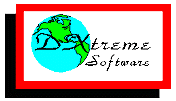DVB-T (Digital Video Broadcasting — Terrestrial)
Ch-1705, QAM-16, Br~2232, Sh~2790, k=1/4 (not standard/typical mode - 4K)
Author: SergUA6
Band Width ~4800000 Hz
Baud Rate ~2232 Hz
n-Ary (PSK/MPSK) QAM-16
Count of Carriers 1705
Step between carriers ~2790 Hz
RX mode direct output from modulator
Sonograms:
pic.1 General view
Diagrams:
pic.2 Quantity of the chanells, manipulation speed
pic.3 Constellation in the channel
pic.4 Constellation in the channel
DVB-T(Digital Video Broadcasting — Terrestrial) - The digital standard of the television, which wide spread all over the world has begun long time ago. In Russia implementation of this standard is carried out since 2004.
This example is received from modulator DVB-MidiMod2 — 2×TS it possesses not absolutely standard parameters. The standard modes for DVB-T modes are 8K and 2K, with a standard band of a signal approximately 7600 kHz. 8K and 2K are the sizes FFT/IFFT blocks, which are used at modulation/demodulation, where K = 1024. In this example the size of the block is not typical for DVB-T - it is equal 4K. 1K, 2K, 4K etc - this are the typified values oriented on usage of the fast algorithms FFT, which hardware implementation is well mastered. Nevertheless, within the limits of coefficient k = 1/4 for this signal, there is a big set of other, absolutely correct sizes of FFT blocks, at which the signal modulation/demodulation is possible, as it is shown. The signal has mass of distinctive features, to enumerate which there is no sense.
Standard DVB-T itself is well documentated and pretty difficult.
From explicit features of this signal, it is possible to mark offset/shift of the central channel of the constellation, what is most likely is a consequence of malfunction of the modulator. At total quantity of channels in 1705, loss of one, certainly isn't a fatal problem as in standard DVB-T powerful noise-resistant coding is used. It is necessary to mark that in 2007, the new standard DVB-T2, which had been accepted, possessing considerably more ample opportunities than DVB-T.













